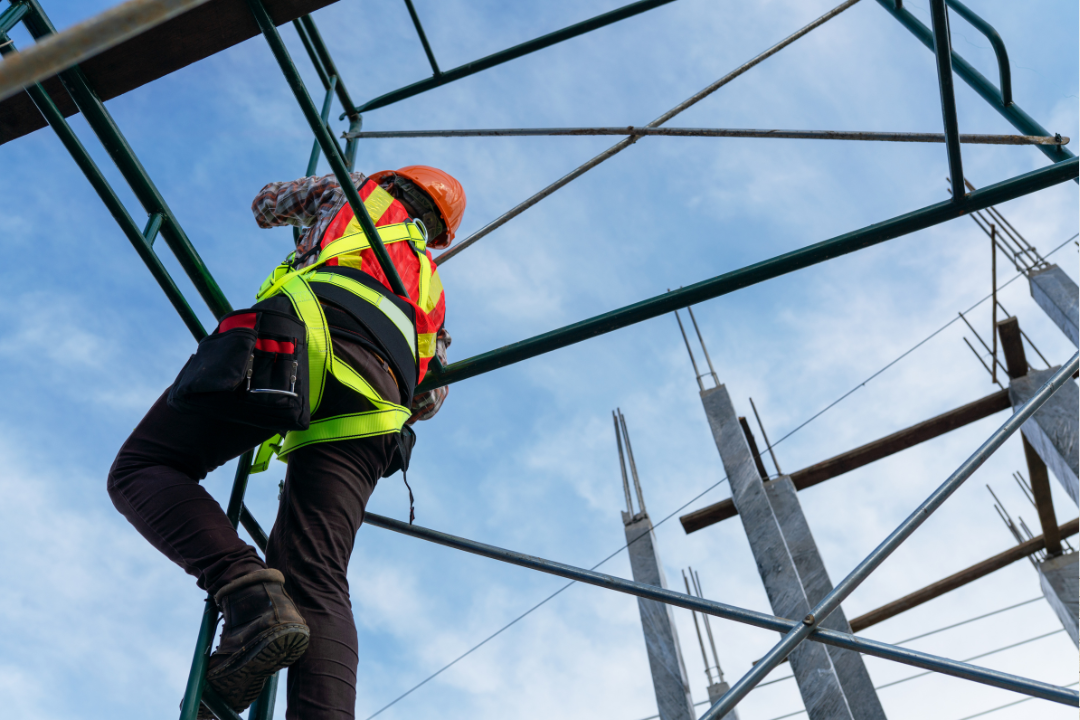Rope access operations involve using ropes and specialised techniques to access and work in challenging and elevated environments, such as construction sites, industrial facilities, and natural cliffs. While rope access can be an effective and safe method for various tasks, it does come with its own set of challenges.
Common challenges at height
This month, the expert team at Kerrect have delved into some of the more common challenges we face working at height, such as the need to ensure adequate safety and training, hazardous weather, equipment malfunctions and a lack of communication. Given our extensive understanding of incorporating proper height safety practices, we’ve also offered solutions to some of these ever-present difficulties.
Safety and training
It’s pretty obvious that working at great heights, attached to a mere rope, can come with a range of concerns and issues. As a result, safety should always be the top priority. In order to ensure safe procedures are adhered to at all times, it’s imperative that all personnel involved on site are properly trained and certified in rope access techniques. This includes providing new industry information, conducting regular safety meetings, professional development sessions and supervision to protect everyone from WHS risks. It’s also a good idea to invest in comprehensive training and certification programs for your rope access personnel and to regularly review and update workplace procedures.
The weather
Believe it or not, weather conditions can significantly impact rope access operations. Strong winds make it challenging to control rope movements, rain can create slippery surfaces and reduces the friction between the rope and attachments. Extreme temperatures and prolonged exposure to the sun can also affect the performance of the ropes and equipment. Therefore, regular monitoring of up-to-date weather forecasts is imperative to avoid inclement weather, such as storms, strong winds or intense heat. It’s also a good idea to have contingency plans in place for adverse weather conditions to ensure conditions remain safe.
Equipment malfunctions
Equipment malfunctions can have serious consequences in rope access operations, as they can compromise the safety and efficiency of the work being performed. Rope access operations typically involve workers using specialised equipment to access and work at heights or in confined spaces, therefore any malfunction in equipment used can lead to accidents, injuries, and job delays. Therefore, carrying out regular inspections and maintenance of all rope access equipment is paramount to ensuring its’ reliability and safety.
In addition, all equipment used should be designed, manufactured, used and maintained in compliance with industry standards. And, although it might seem like an afterthought, the correct storage of your equipment is vital to ensure longevity and avoid degradation.
Communication challenges
Rope access relies heavily on teamwork to ensure both safety and work precision and given inadequate communication can increase the risk of accidents and injuries, rapid and clear communication is vital. Therefore establishing effective communication protocols before starting work and ensuring everyone understand them, as well as using hand signals and radios, if verbal communication is not possible, are all effective methods of ensuring clear and concise communication whilst on site.
Want to know more?
For more information about any of these common challenges faced in rope access operations, or for any other information regarding the essential components of height safety, contact one of our experienced team at
Kerrect today.
